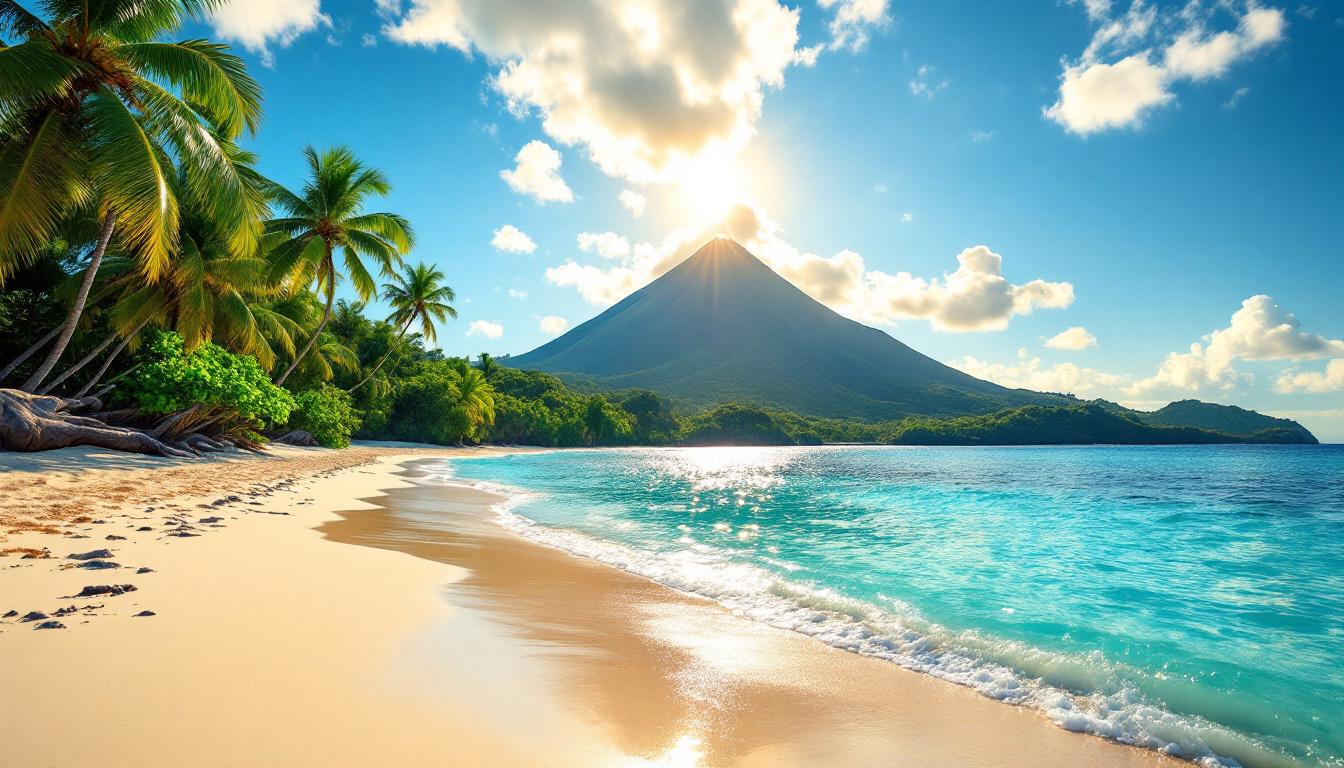Martinique hits you with a startling contradiction: it’s undeniably France, yet unmistakably Caribbean. This volcanic island sanctuary floats in crystalline waters just a short flight from Miami, yet remains remarkably undiscovered by American travelers. With nearly one million visitors annually but few Americans among them, Martinique presents a rare opportunity to experience authentic French Caribbean culture without the commercial tourism found on neighboring islands.
The island where rum rivals fine cognac
Martinique isn’t just another rum destination – it’s the only Caribbean island producing rhum agricole, made from fresh-pressed sugarcane juice rather than molasses. This distinct method earned it the prestigious AOC designation usually reserved for fine French wines and cheeses.
“Our rum is our history, our heritage. Each distillery tells a different story of Martinique,” explains Master Distiller Georges Labat, whose family has crafted rum for four generations.
Visit historic distilleries like Habitation Clément, where you can sample aged varieties that compete with rare whiskies and cognacs in complexity and refinement.
A volcano looming over paradise beaches
Mount Pelée, the Caribbean’s Vesuvius, dominates the northern landscape. This active volcano’s 1902 eruption destroyed Saint-Pierre, once known as the “Paris of the Caribbean.” Today, adventurous hikers can climb through misty rainforests to its 4,583-foot summit for panoramic views across to Dominica.
The southern region offers a dramatic contrast with pristine beaches like Les Salines, where powder-white sand meets turquoise waters. For something truly special, seek out secluded coves with perfect water temperatures and exceptional snorkeling at Anse Dufour and Anse Noire – a unique black sand beach formed from volcanic minerals.
French gastronomy meets Caribbean ingredients
Martinique’s cuisine represents the most sophisticated fusion of European technique and tropical ingredients in the Caribbean. Local chefs trained in France return to create dishes impossible to find elsewhere.
At beachfront Le Petibonum, celebrity chef Guy Ferdinand serves foie gras mille-feuille layered with caramelized banana – a perfect metaphor for the island itself.
“We cook with French precision but Caribbean soul. It’s not fusion – it’s our natural identity,” Ferdinand explains while preparing freshly-caught dorado.
Authentic experiences without American crowds
Unlike other Caribbean destinations, Martinique hasn’t developed large-scale American tourism. You won’t find major U.S. hotel chains or cruise ship masses. Instead, discover authentic experiences away from typical tourist paths.
Wander Fort-de-France’s spice markets, where vendors arrange turmeric and vanilla in colorful pyramids. Visit the Sacré-Coeur de Balata Church, a miniature replica of Paris’s Montmartre basilica surrounded by tropical gardens.
Historical richness beyond beaches
Martinique’s complex history unfolds at sites like La Savane des Esclaves, a living museum documenting the island’s painful slavery period. The ruins of Saint-Pierre reveal fascinating stories of the volcano’s destruction, including the miraculous survival of just one man – a prisoner protected by his thick-walled cell.
Like Europe’s best-preserved historical sites, Martinique maintains connections to its past through carefully preserved architecture and traditions.
Where to stay: French luxury, Caribbean style
Accommodations range from intimate boutique hotels to luxury villas. For a truly memorable experience, consider hotels like Cap Est Lagoon Resort or hidden coastal retreats reminiscent of Mediterranean escapes.
The island’s infrastructure rivals European standards with excellent roads and modern amenities, making exploration comfortable even for travelers seeking convenience alongside authenticity.
Getting there: easier than you think
Direct flights from Miami have improved accessibility for American travelers. While French remains the primary language, English is increasingly common in tourist areas, though learning a few French phrases will enhance your experience.
Martinique offers that increasingly rare treasure: a destination maintaining its authentic character while providing sophisticated comforts. Like medieval French villages with ancient secrets, this island preserves traditions while embracing visitors ready to discover its wonders.
